FC Bayern Munich have once again successfully secured a dominant striker to bolster their lineup. In the aftermath of Robert Lewandowski’s departure last summer, the absence left by the record-breaking scorer was a significant challenge. The stage is set for Harry Kane, recognised as one of the world’s premier strikers, to step into this pivotal role.
Despite an impressive total of 92 goals scored in the previous season, with the Bundesliga’s most potent offence, Bayern’s scoring prowess was a collective effort that involved numerous contributors. However, this narrative is primed for transformation with the arrival of Harry Kane. The former Tottenham striker brings a remarkable record of 280 goals for his former club.
Kane’s arrival is poised to reignite the spark of an assertive, goal-driven FC Bayern, rekindling memories of their historic goalscoring icon from earlier times. In this tactical analysis, we will discover Harry Kane‘s strengths and weaknesses in the form of a scout report. Also, in this analysis, we will find out how he fits into Thomas Tuchel‘s tactics at FC Bayern.
Bayern’s problems last season
Last season, FC Bayern Munich faced significant challenges in their offensive game, particularly after the departure of Robert Lewandowski. Thomas Tuchel’s preference for a ‘False 9’ system, characterised by fluid interchange among the forward line, was instrumental in Chelsea’s success during his initial season. In Lewandowski’s absence, Bayern initially turned to Sadio Mané’s powerful runs and ability to exploit space. The team’s possession-oriented approach often led to opponents adopting deep defensive formations, limiting the space behind their defensive lines.
While Mané showcased his prowess and dynamism inside the penalty area during attacking transitions, Bayern lacked the link-up play with a striker playing with their back to goal. The absence of a traditional Target Striker’s qualities was evident. Eric-Maxim Choupo-Moting, although effective as a backup option, couldn’t consistently lead the line due to his limitations in certain areas, like long-passing and ball retention under pressure. Serge Gnabry often occupied the central position, supported by the dribbling skills of Kingsley Coman and the direct energy of Leroy Sané. The objective was to use the movement of players like Musiala and Müller in central areas, with Sané and Gnabry exploiting spaces behind the defence.
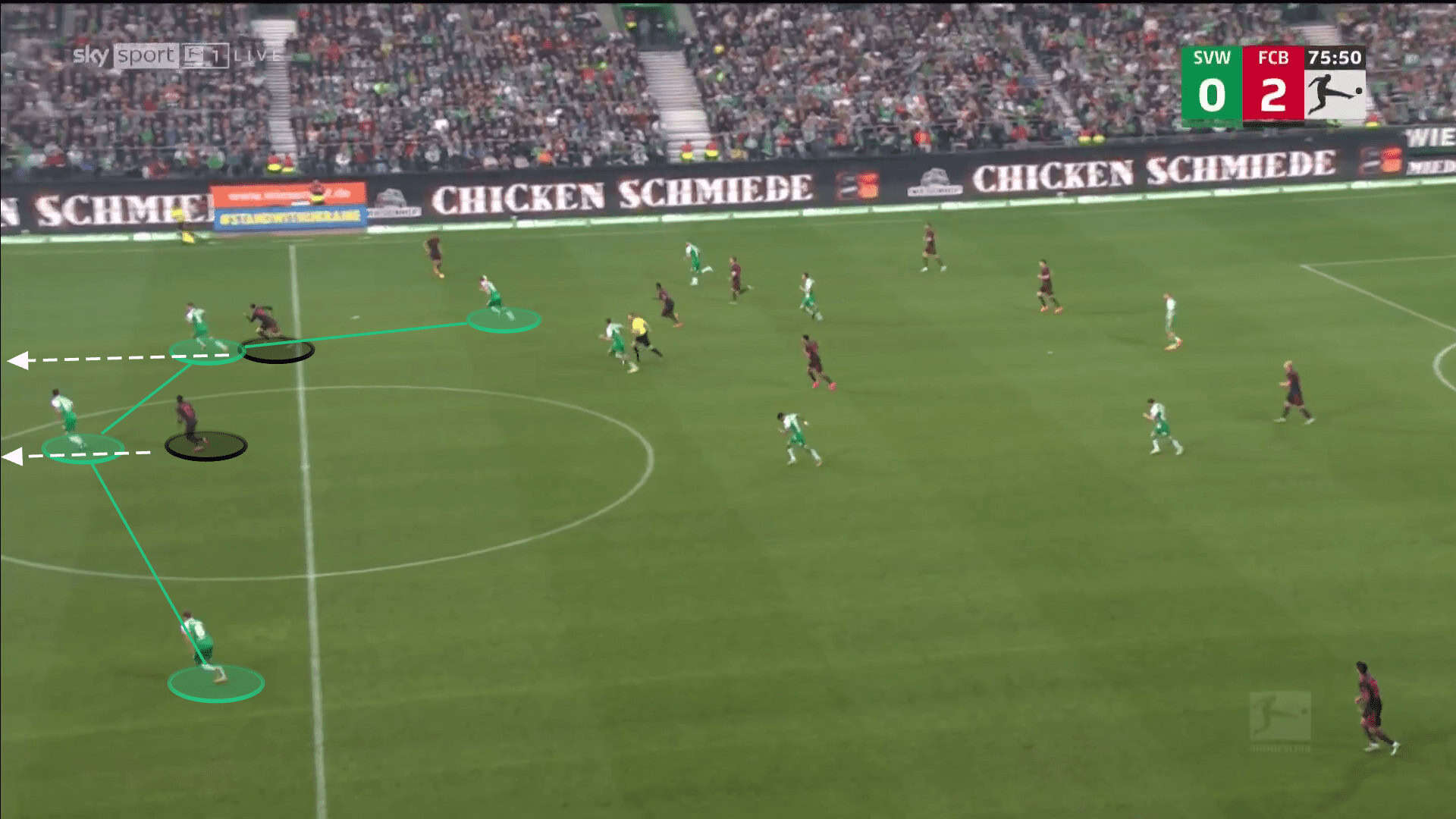
However, this tactical approach had its limitations. The crux of the issue lies in Bayern’s need for a central focal point in their attack. The team can’t afford to continue altering their tactics and placing players in unfamiliar roles that don’t align with their strengths.
Player Profile
Bayern Munich’s pursuit of Harry Kane this summer underscores their strategic focus on strengthening their attacking prowess. His unique ability lies in translating his exceptional passing precision into clinical goalscoring, consistently positioning himself in the most suitable areas to convert chances.
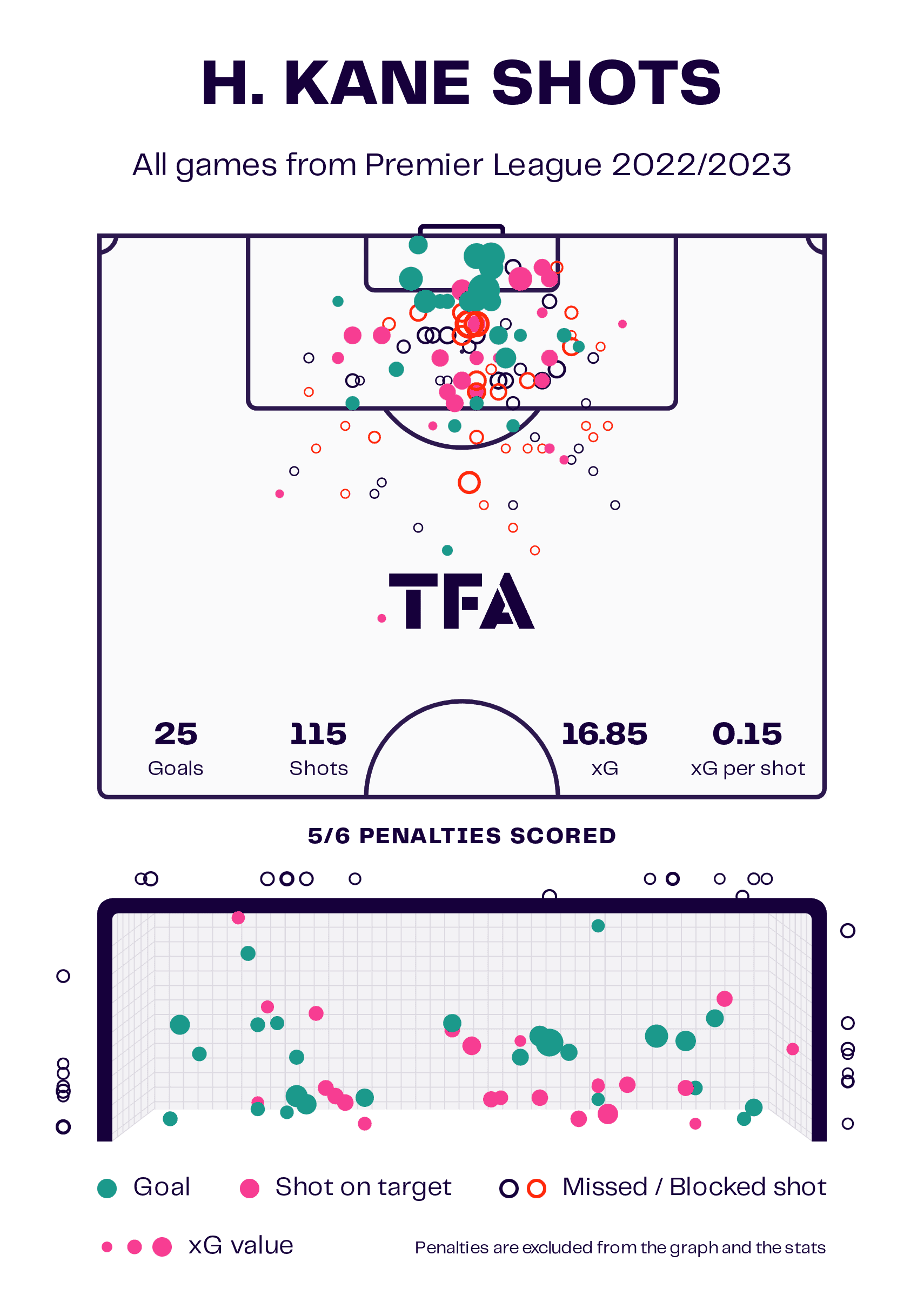
Standing at 188 cm, Kane embodies the physical requirements of an elite poacher. His positional acumen, tactical awareness, and finishing ability within tight spaces are globally acclaimed. Furthermore, his heading prowess brings an added layer of versatility to Bayern’s attacking strategies. In the previous season, Bayern often encountered a recurring scenario where crosses and passes into the penalty area missed their mark, resulting in a lack of aerial threat. Kane, however, scored a remarkable 10 of his 30 league goals through headers.
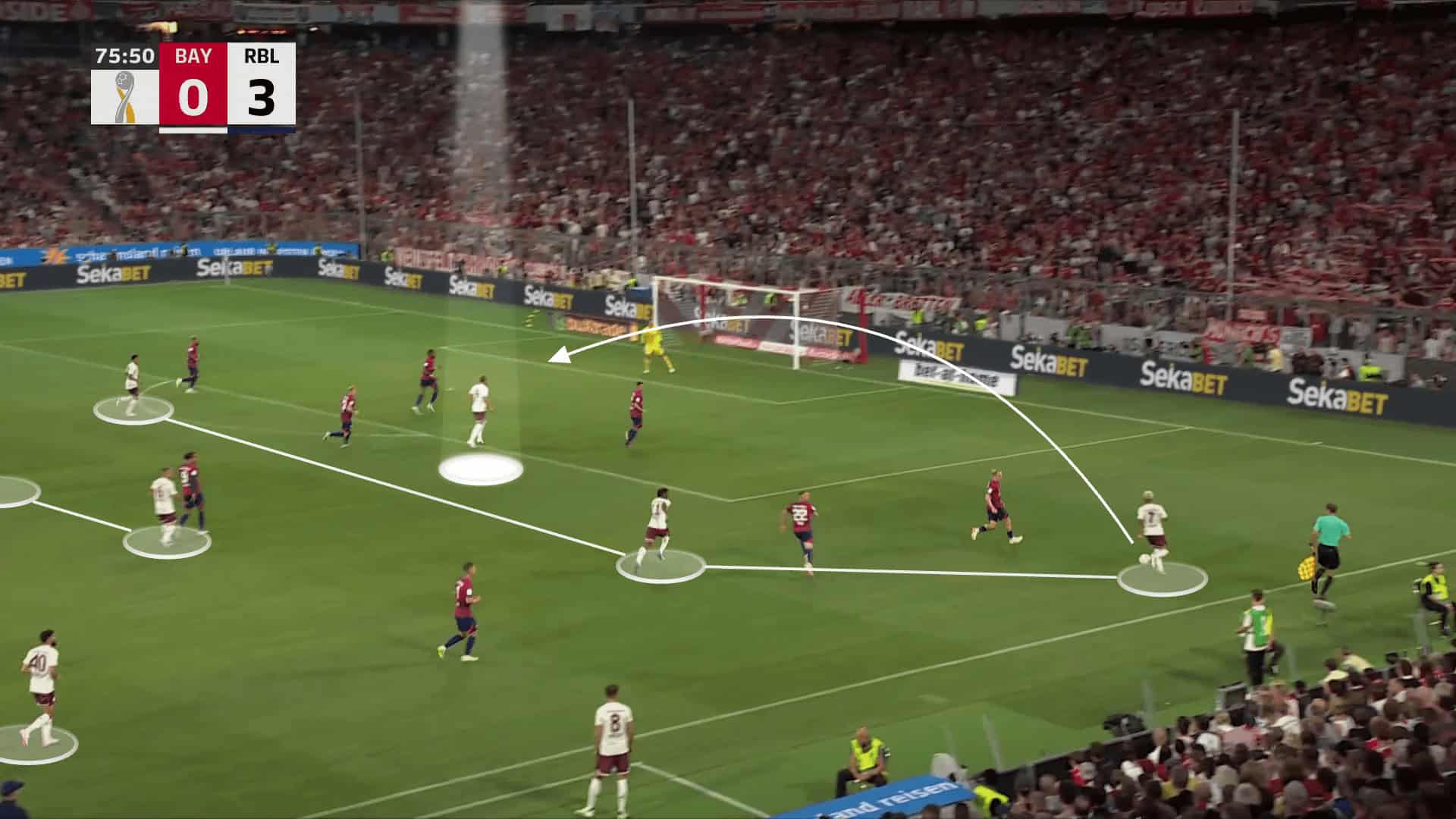
Kane’s limitations are few and far between. His mobility might be an area of relative deficit. Others possess greater speed and frequently shift between central positions and the wings, engaging in dribbling from there. Kane will need to adapt to the distinct pressing patterns and defensive positioning unique to this league, differing from the Premier League’s dynamics. In the Bundesliga, opponents tend to sit deeper, which demands nuanced adjustments in offensive strategies.
A noteworthy strength of Kane lies in his adeptness at exploiting spaces at the back-post, capitalising on defenders’ ball-focused attention to sneak into the penalty area unmarked and score.
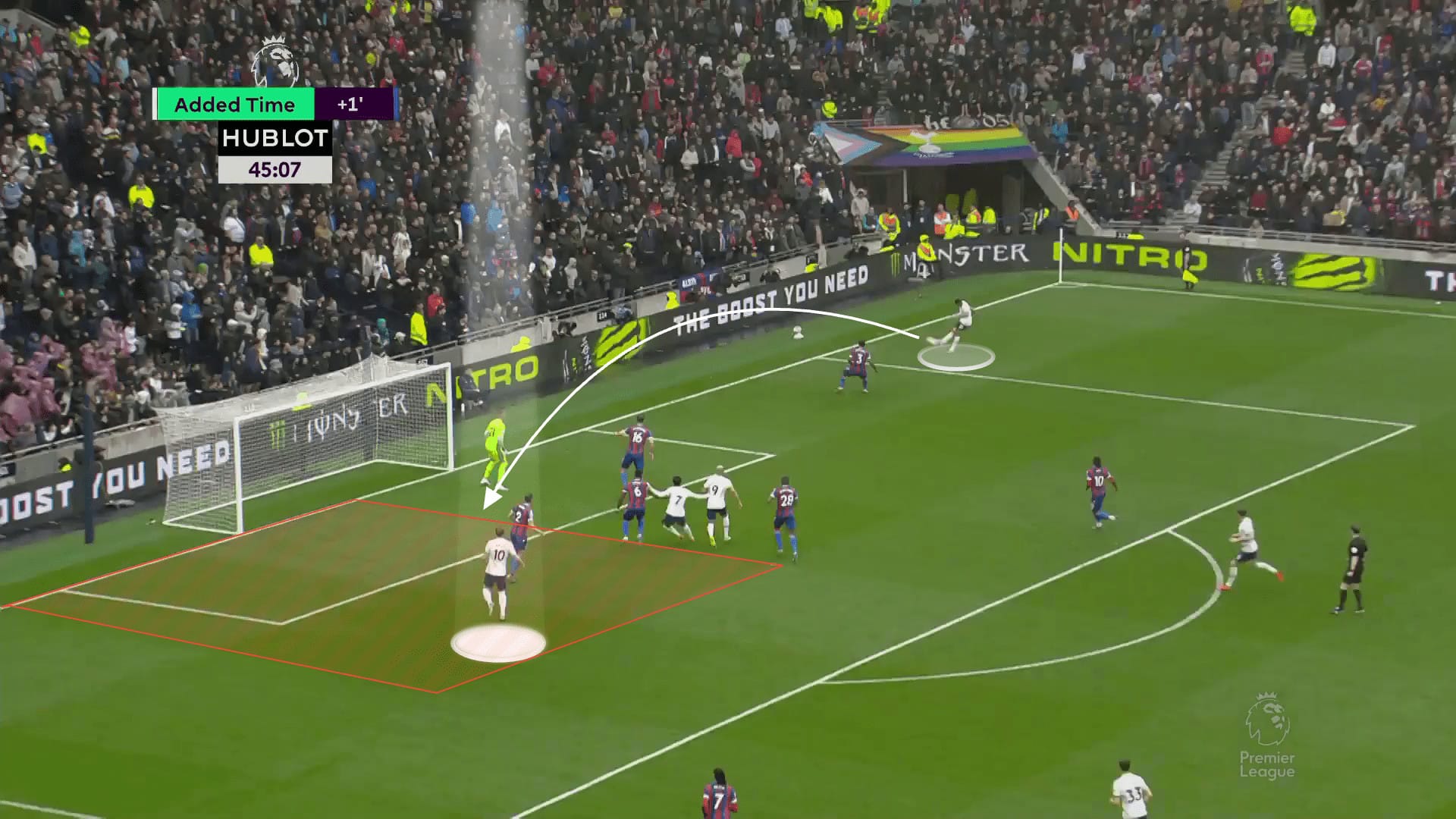
This quality was conspicuously missing from Bayern’s arsenal last season. Despite consistently creating numerous chances, they often lacked the crucial in-box movement required to execute the decisive pass at the pivotal moment.
How he fits into the system
In the tactical landscape of FC Bayern, the formidable challenge of dismantling a low-block defence takes centre stage. Often, the solution lies in devising intricate strategies that facilitate dynamic positional shifts. Integrating the centre-forward as the linchpin of these rotations yields immense benefits. This tactic serves a dual purpose: luring defenders or affording the striker valuable time and space to orchestrate deeper plays.
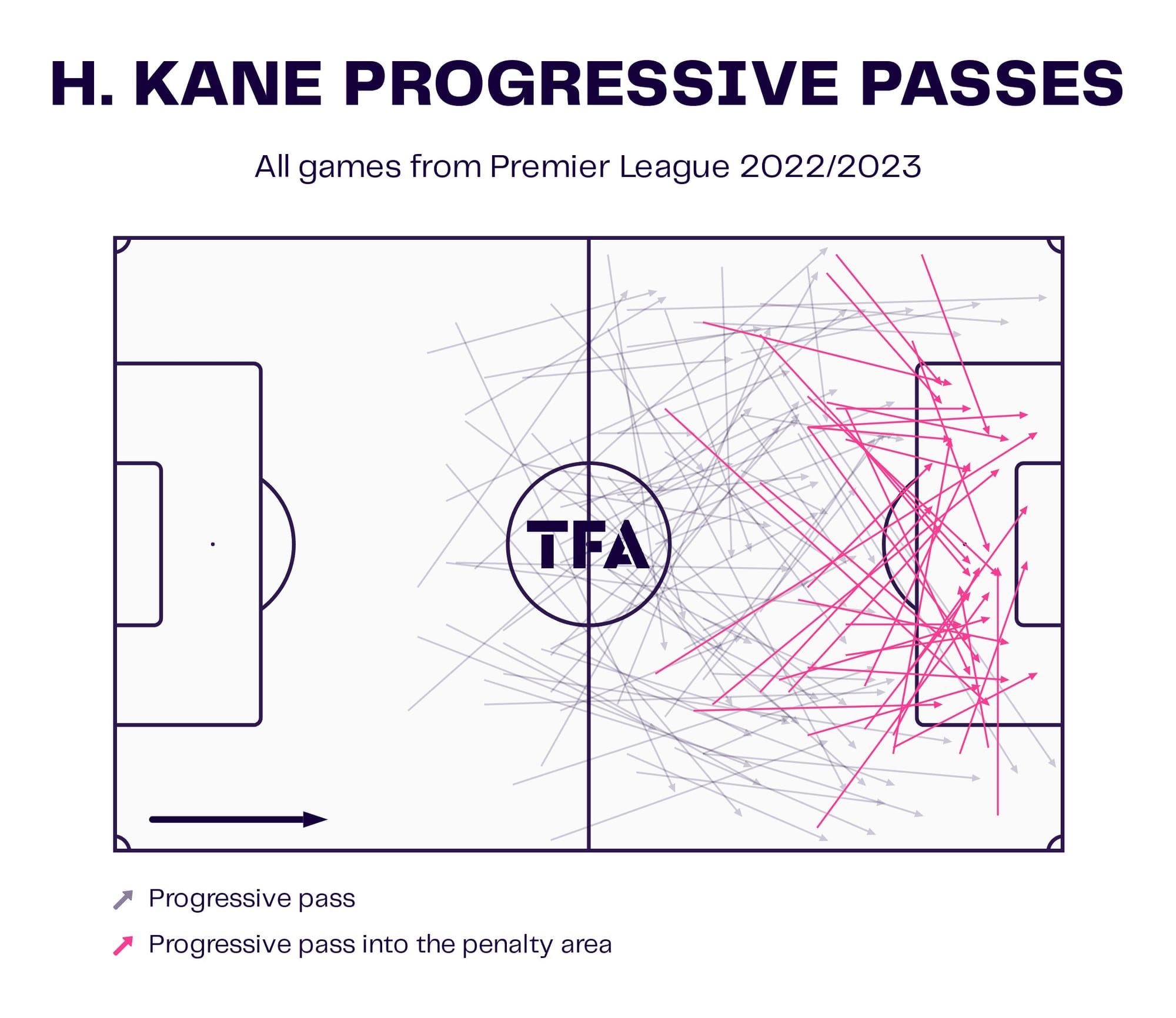
While Joshua Kimmich continues to excel as Bayern’s deep-lying playmaker, the addition of Harry Kane introduces a fresh dimension to their build-up play. Kane’s prowess in distribution, orchestrating lofted passes, and maintaining composure under pressure amplifies Bayern’s offensive capabilities. His range extends from delivering fundamental back passes amidst defensive pressure to exploiting vacant spaces and generating scoring opportunities.
Of noteworthy mention is the 30-year-old’s mastery of passes, a potent weapon against low-block defences. As rival teams brace for his adept play-switching, Kane’s unexpected through passes could artfully unlock well-structured defences.
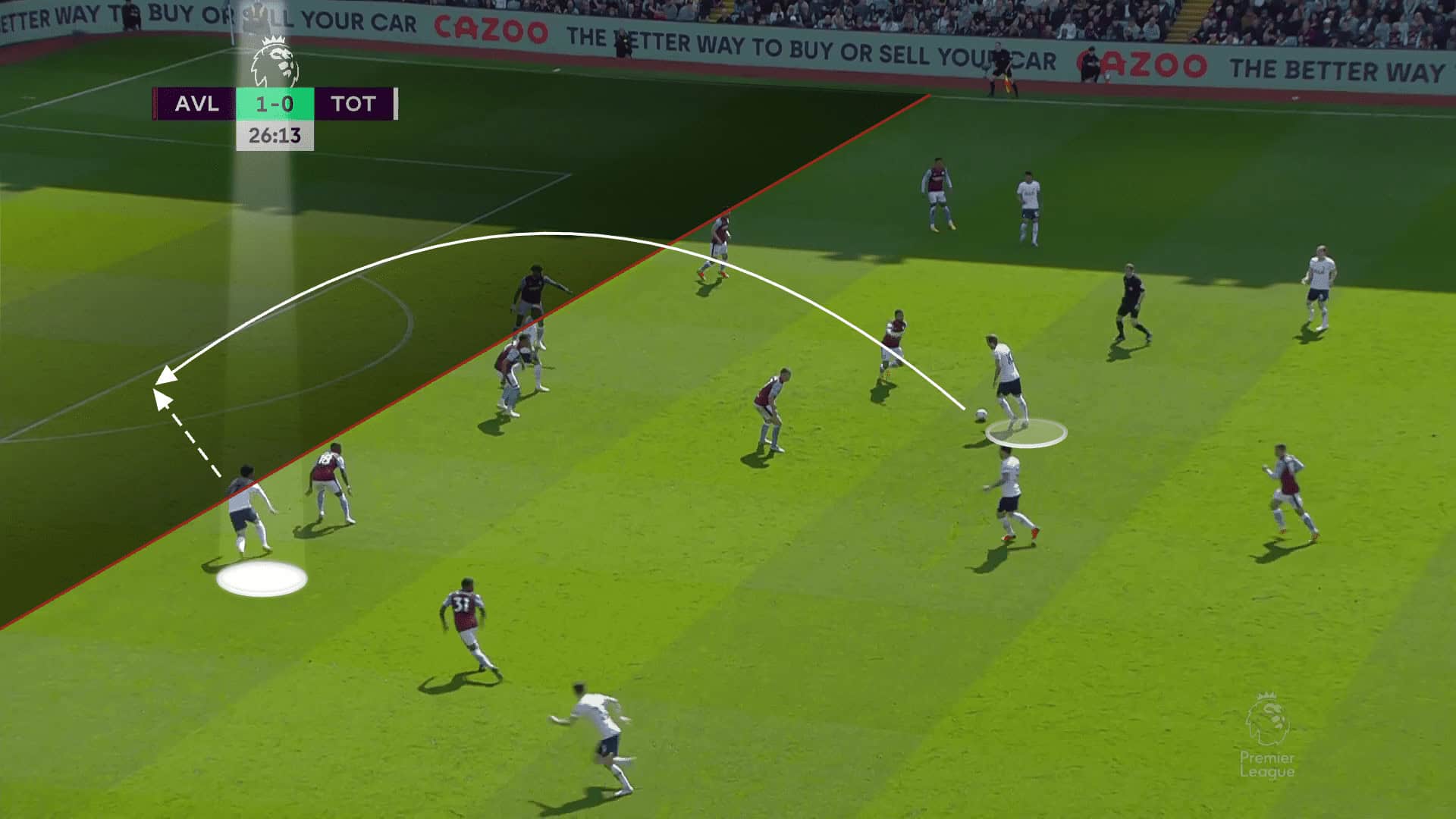
This level of creative finesse could conceivably rival Thomas Müller’s art of space manipulation and chance creation. The synergy extends to complement Jamal Musiala’s meticulous ball control and swift runs into gaps. This cohesion augments the pace of Gnabry and Sané alongside the remarkable crossing skill of Kingsley Coman. Kane’s role is poised to flourish amidst orchestrated movement, adopting a foil role while occasionally assuming the natural number 9 position.
Potential line up
FC Bayern boasts an impressive array of attacking wingers, placing them among European football’s top attacking rotations. However, last season revealed that the attributes of these speed dribblers often went underutilised. Runs towards the goal line or the penalty area frequently amounted to little due to restricted space or a lack of a viable passing option.
The addition of Kane could usher in a significant enhancement, as his goalscoring threat could draw attention from one or two defenders, thereby creating more expansive opportunities for his teammates. This is particularly evident in scenarios involving long balls from the defensive line.
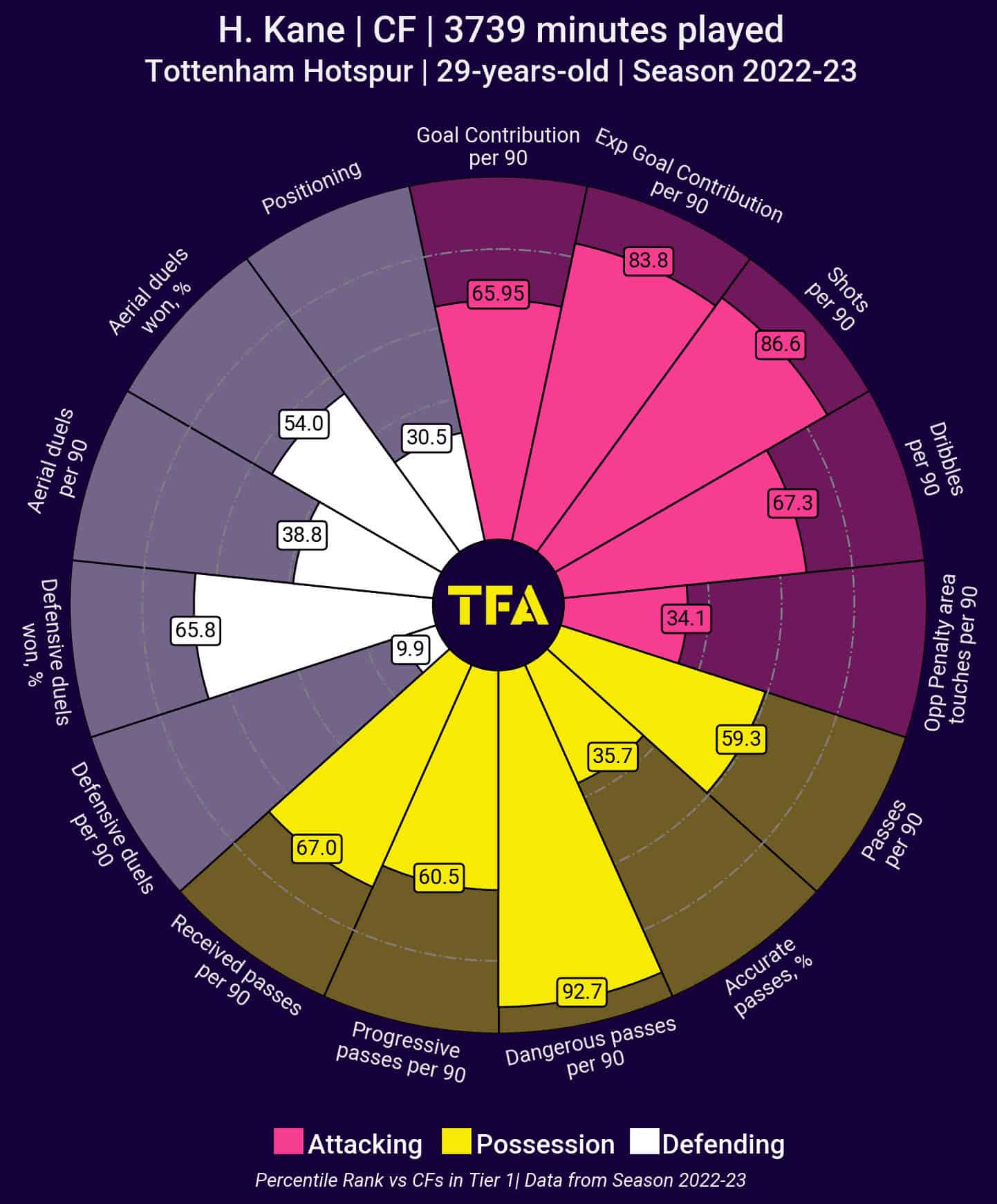
Tuchel’s approach has led to fewer direct, counter-attacking situations where flying balls outmanoeuvre the opponent’s defence. In such instances, long passes to traditional wingers often faltered in aerial duels against physically robust defenders. Like Lewandowski’s style, Kane’s powerful physique could fill the role of a deep pass recipient.

He could hold up the ball, lay it off, or distribute it to teammates positioned at the interface of the opposing defence. This strategic shift would alleviate the burden on players behind the front line—names like Thomas Müller, Jamal Musiala, or Kimmich—who would benefit from increased movement freedom.
The prospects for extended playing time for individuals like Mathys Tel may dwindle if the superstar arrives. Despite this, both the player and his agent have expressed Tel’s desire to remain with the team and establish himself. However, if Kane joins, Tel could face another season primarily on the sidelines. Eric-Maxim Choupo-Moting’s prospects appear even more uncertain.
His injury setbacks led to his exclusion from various friendlies and the trip to Asia. Given these circumstances, Tel seems to have overtaken Choupo-Moting in the squad hierarchy. While Choupo-Moting holds importance for team morale, his reliability as a viable on-field alternative appears compromised.
Adding Harry Kane to FC Bayern’s roster introduces a refreshing tactical flexibility that significantly impacts their attacking strategy. His stature as a tall attacker bolsters Bayern’s set-piece effectiveness and adds a new dimension to their offensive approach—crosses.
This alteration could potentially prompt a shift in how Bayern’s wing maestros operate, with an inclination toward positioning themselves on the side that aligns with their dominant foot. This strategic tweak within a 4-2-3-1 formation aims to enhance the precision of Kane as a target player in the centre.
Kane’s adaptability aligns seamlessly with the concept of inverted wingers, who navigate from the flanks inward, seeking intricate passing sequences or opportunities for a finishing touch at the centre. This approach harmonises perfectly with Kane’s multifaceted skill set. His capability to engage in combinations and integrate within intricate build-up patterns endows Bayern’s attacking endeavours with newfound depth and variation.

Furthermore, Kane’s playing attributes also make him a prime fit for a 4-1-4-1 formation. The presence of intelligent and creative players like Jamal Musiala and Thomas Müller provides a conducive environment to initiate promising attacks from the central channels. Kane’s innate ability to link play, combined with the vision and awareness of his fellow midfielders, offers the potential to carve open opposing defences.
Conclusion
Kane’s inclusion brings forth an enhanced tactical toolkit for FC Bayern. His aerial prowess and striking ability make him an optimal focal point for set pieces and crosses, thereby enriching Bayern’s offensive arsenal. His compatibility with the inverted winger strategy and adaptability within a 4-1-4-1 formation underlines his value as a versatile asset who can unlock various attacking avenues.





Comments